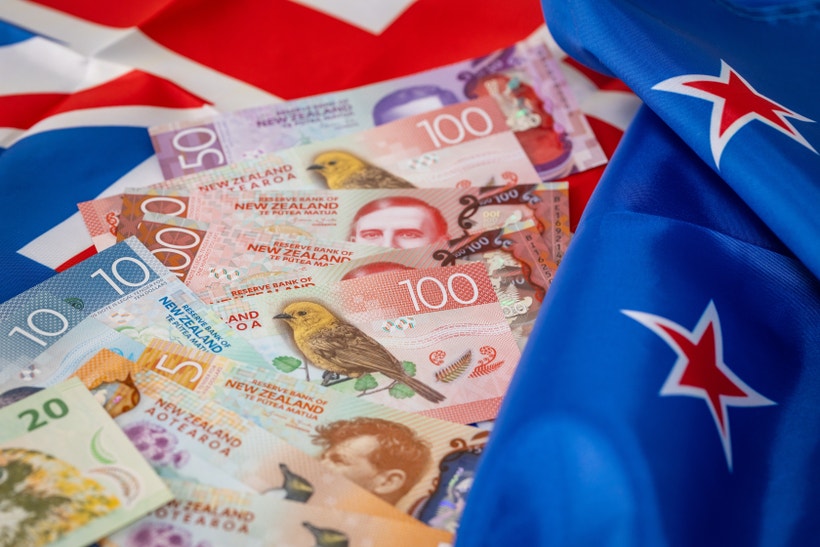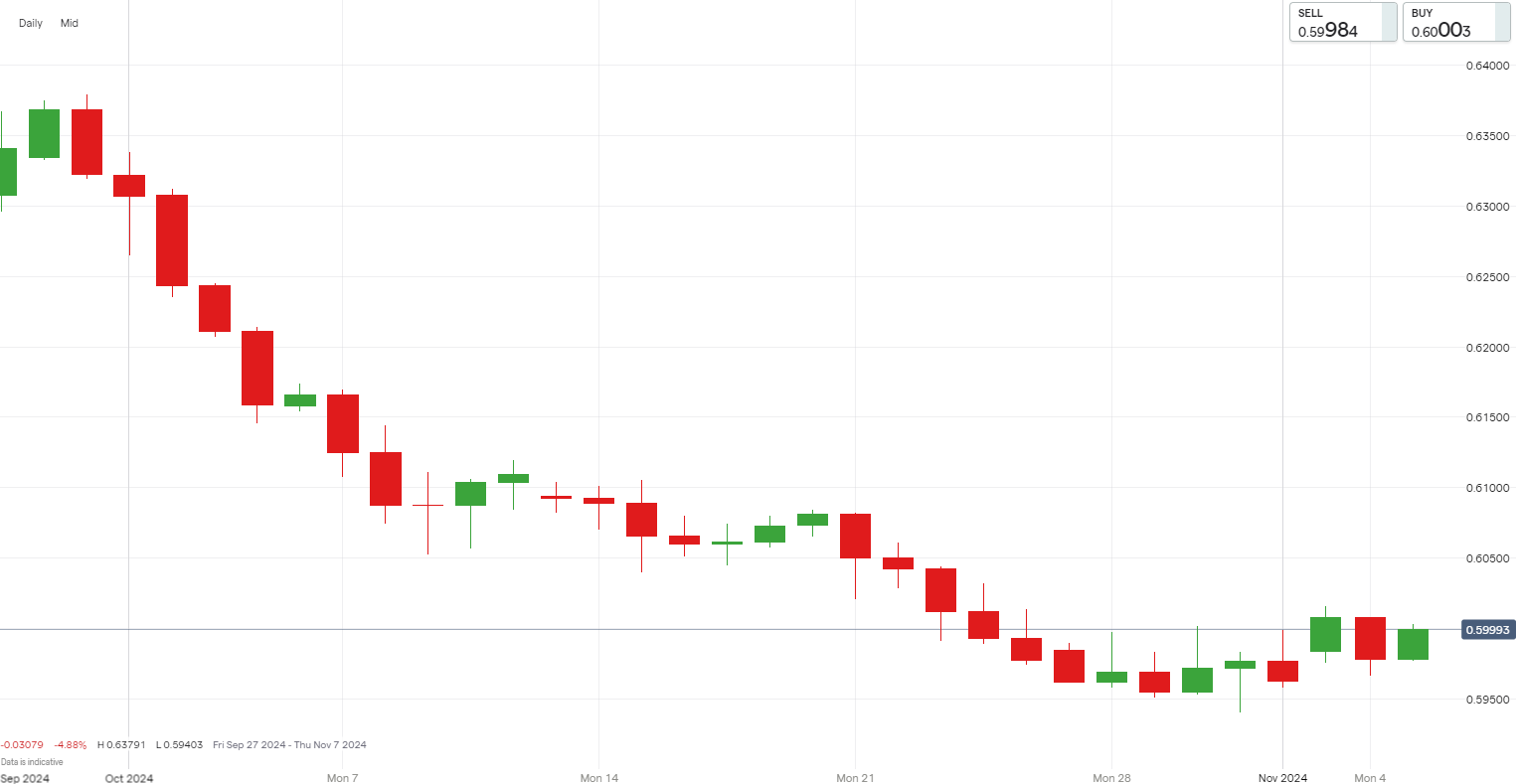NZD/USD unable to hold 0.6000 after bearish October
The NZD/USD pair faces volatility amid US election outcomes, Fed rate cuts, and RBNZ's dovish stance, with potential support from China's growth and key labor market data influencing the Kiwi's direction.

Key points
- NZD/USD at $0.599 due to weaker USD and China's services growth
- RBNZ's dovish stance and predicted rate cut pressure NZD
- Fed's 50 bps rate cut and future decisions impact USD strength
- US election and fiscal policies add volatility to the dollar
- NZD/USD influenced by RBNZ policy, US rate cuts, and labor data
NZD Makes Wavering Recovery After Extended Bearish Streak
The New Zealand dollar rose to approximately $0.599 per US dollar, benefiting from a slightly softer USD amid global anticipation of the US presidential election results. China's rapid services activity growth has provided additional support to the Kiwi, thanks to New Zealand's strong trade ties with China. However, the New Zealand dollar continues to face downside risks from a dovish Reserve Bank of New Zealand (RBNZ), which has issued warnings about economic challenges in its financial stability review. Predictions of a half-point rate cut at the RBNZ's final meeting of the year add to the pressure, potentially leading to further depreciation. Upcoming labor market data in New Zealand will be crucial for assessing economic conditions and guiding the RBNZ's policy outlook.
NZD/USD price history

US Federal Reserve Rate Cut Announcement Looms Ahead
This Thursday, the Federal Reserve's anticipated rate cut announcement takes center stage. In September, a half-point rate reduction was decided to balance inflation concerns with a weakening labor market—marking the first dissent from a Fed governor since 2005. While the half-point cut should not signal a less favorable economic outlook, the Fed maintains confidence in inflation progressing towards the 2% target. For the US dollar, this decision could have a mixed impact; lower rates might weaken the dollar, but confidence in economic stability could lend support. How markets perceive future monetary policy will likely influence the dollar's trajectory.
US Dollar Remains Strong Amid Pre-Election Investor Cautiousness
The dollar index is fluctuating around 103.7, reflecting declines linked to election uncertainties as traders adjusted positions away from "Trump trade" strategies. Polls indicate a tight race between Kamala Harris and Donald Trump, contributing to market volatility. The outcome of congressional control is also crucial, with potential shifts in fiscal policy regarding spending and taxes. The Fed is forecasted to announce a 25 basis point rate cut, which, along with expected adjustments in December, could weaken the dollar by reducing its appeal to risk-averse investors seeking stable returns. Lower interest rates typically make a currency less attractive, potentially leading to further depreciation amidst uncertain political and fiscal landscapes.
What’s Next for NZD/USD?
The NZD/USD pair faces a complex environment shaped by New Zealand’s domestic conditions and US economic developments. The Kiwi has modestly recovered, reaching around $0.599, helped by temporary USD weakness. Yet, the RBNZ's dovish stance and warnings of economic challenges exert pressure. Expectations of a half-point rate cut at the year's final RBNZ meeting could lead to further NZD depreciation. On the US front, Fed policy decisions, including recent and forecasted rate cuts, influence the USD's strength, while election uncertainties and potential fiscal policy changes add volatility. The NZD/USD pair may see fluctuations, with the Kiwi's path depending on RBNZ decisions, US rate cuts, and election outcomes impacting sentiment. Surprising strength in New Zealand’s labor data could bolster the Kiwi, while continued RBNZ dovishness might pose challenges.
How to trade NZD/USD
- Open an account to get started, or practice on a demo account
- Choose your forex trading platform
- Open, monitor, and close positions on NZD/USD
Trading forex requires an account with a forex provider like tastyfx. Many traders also watch major forex pairs like EUR/USD and USD/JPY for potential opportunities based on economic events such as inflation releases or interest rate decisions. Economic events can produce more volatility for forex pairs, which can mean greater potential profits and losses as risks can increase at these times.
You can help develop your forex trading strategies using resources like tastyfx’s YouTube channel. Our curated playlists can help you stay up to date on current markets and understanding key terms. Once your strategy is developed, you can follow the above steps to opening an account and getting started trading forex.
Your profit or loss is calculated according to your full position size. Leverage will magnify both your profits and losses. It’s important to manage your risks carefully as losses can exceed your deposit. Ensure you understand the risks and benefits associated with trading leveraged products before you start trading with them. Trade using money you’re comfortable losing. Past performance is not indicative of future results.
